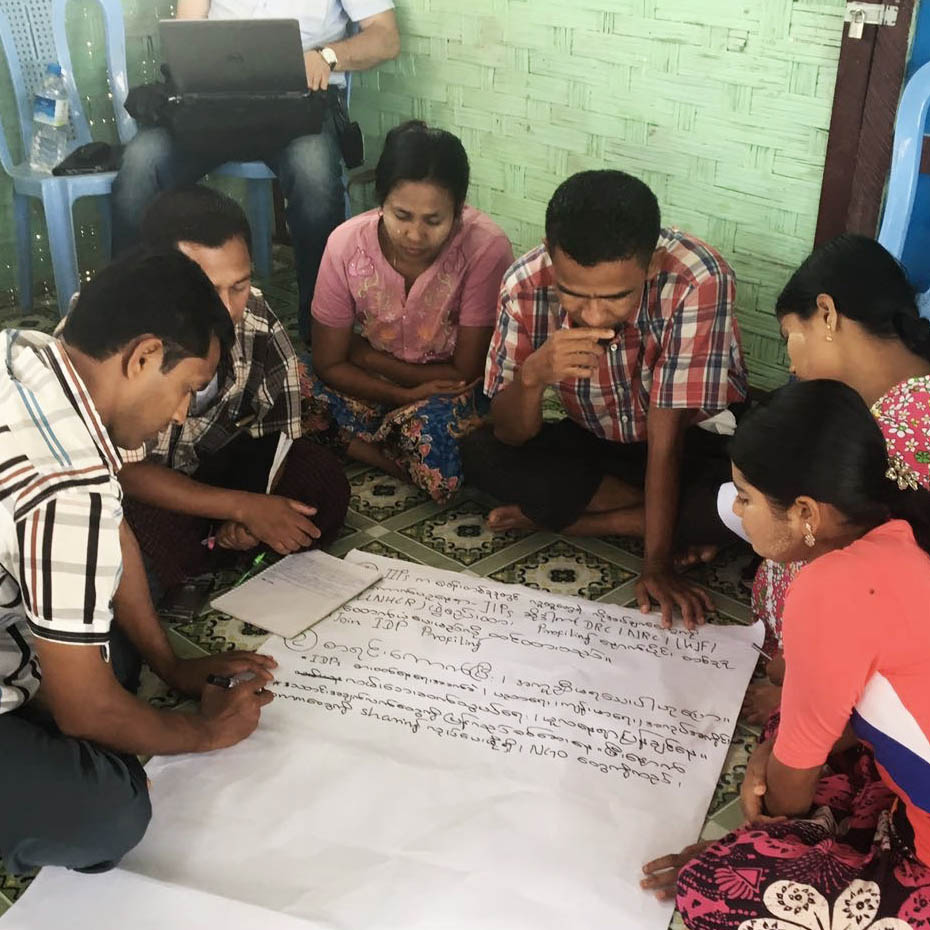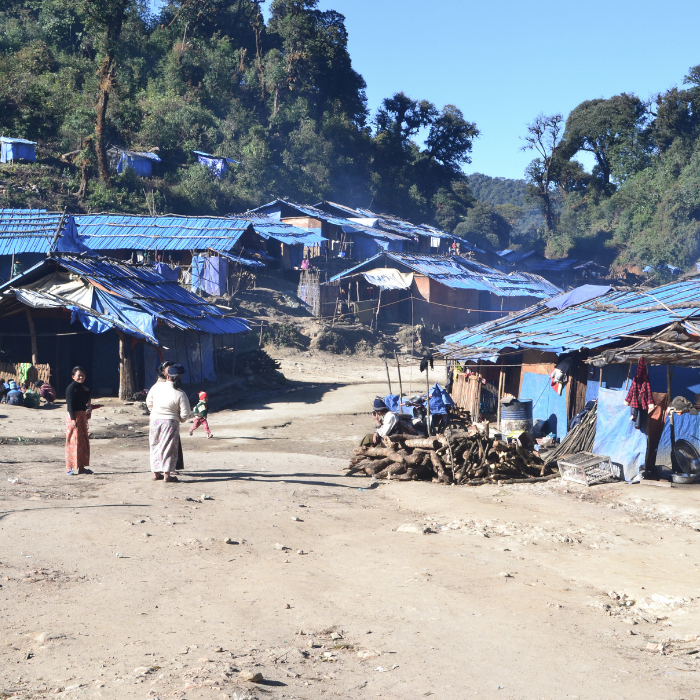Myanmar
From the Tanintharyi region in the south to Rakhine state in the west and Kachin state in the north, a number of ethnic conflicts have given rise to different displacement situations across Myanmar for many years. The country is also prone to disasters and suffers from many development challenges. Displacement dynamics are complex, and partners have often struggled to establish a clear and shared understanding of the phenomenon.
JIPS’ support in Myanmar began in 2013, when it supported the Camp Coordination and Camp Management (CCCM) Cluster and other partners in Kachin in refining and undertaking a longitudinal profiling exercise covering the situation in the state’s displacement camps between 2013 and 2015. Upon request of several partners, JIPS also conducted a scoping mission for a profiling exercise in the south-east.
JIPS was later asked in December 2015 to support a similar camp profiling exercise in and around Sittwe in Rakhine state that compared the situations of four population groups in the area.
Project overview
Providing evidence on IDPs in Sittwe township, Rakhine State (2016 – 2017)
As members of the CCCM Cluster, the Danish Refugee Council (DRC) and UNHCR requested JIPS’ technical and coordination support in December 2015 for a profiling exercise focused on the displacement situation in and around Sittwe, the capital of Rakhine state, where ethnic violence had displaced more than 121,000 people since 2012. A number of assessments and data collection activities had previously been conducted, but their different methodologies made it difficult to compare the situation between camps and across sectors making prioritisation and other strategic decision-making very difficult.
- Displaced Muslims living in camps;
- Displaced Rakhine residents living in relocation sites;
- Non-displaced residents of Muslim villages, and
- Non-displaced residents of Rakhine villages.
Profiling process & JIPS' support
JIPS supported the profiling exercise both on-site and remotely. It undertook a technical mission to Rakhine in May 2016, during which it worked with various humanitarian and development partners to identify the needs and feasibility of such an exercise. The technical working group was also set up to plan and implement the process, and JIPS supported its members in developing and agreeing on its objectives, scope and other methodological elements.
+
Impact & lessons learned
The Sittwe Camp Profiling Report was published in August 2017, and its findings were discussed in a series of analysis workshops with clusters, government bodies and other stakeholders. Each cluster developed concrete recommendations and ideas for future programmes based on the report’s findings.
- The importance of establishing a strong coordination structure from the outset to create linkages with the government and other partners, and to ensure shared ownership of the process. This is particularly important in politically sensitive situations.
- Rigorous and neutral analysis of the data through collaborative workshops with all clusters and sectors helped to establish common ground and secure credibility across a broad range of stakeholders with differing readings of the situation.
- Flexibility in using the data helped to keep the findings relevant and useful, even after a dramatic change in the displacement situation.
Project overview
Analysing trends in displacement camps in Kachin & Northern Shan States (2013 – 2015)
Protracted conflict in Kachin state in north-east Myanmar has caused significant waves of displacement, during which people have fled to different areas across Kachin and on to neighbouring Shan state. Many IDPs took refuge in camps and camp-like settings dispersed across both government and non-government controlled areas.
- Provide a regularly updated overview of the situation in the camps, including disaggregated population estimates
- Consolidate information for advocacy and fundraising efforts
- Indicate the need for more detailed thematic assessments
- Strengthen the coordination of camp data collection, analysis and response
- Support sustainable capacity-building for camp managers.
Profiling process & JIPS' support
JIPS undertook a mission to Kachin in 2013 that focussed on methodology and tool development, operational planning and training. It held a series of meetings with national and international humanitarian stakeholders, camp managers and other camp representatives to refine the profiling process and tools.
- The first looked at the overall scope of the process, refining its objectives and the roles and responsibilities of different stakeholders, and revised the primary data collection tool with input from a pilot exercise.
- The second outlined the different stages of the process from data collection to analysis, reporting and dissemination.
- a training strategy,
- training tools,
- an enumeration manual,
- database template, and
- draft analysis and reporting plans,

Impact & lessons learned
JIPS’ support led to the development of a comprehensive methodology, revised data collection tools and an operational plan to implement regular camp profiling exercises. Its emphasis on capacity building during its mission and the first profiling round empowered its local partners to run future exercises under their own initiative which they have successfully done for several years.
+Project overview
Assessing the viability of a profiling exercise in the south-east of Myanmar (2013)
Communities in south-east Myanmar have been affected by conflict and displacement for decades, and the dynamics are complex. Many families have been forced to move various times and for various reasons, while others have tried to return. With a number of ceasefires in place and peace processes moving forward, the changing situation on the ground in 2013 highlighted the need and opportunity for a more comprehensive analysis on which to base a coordinated response.